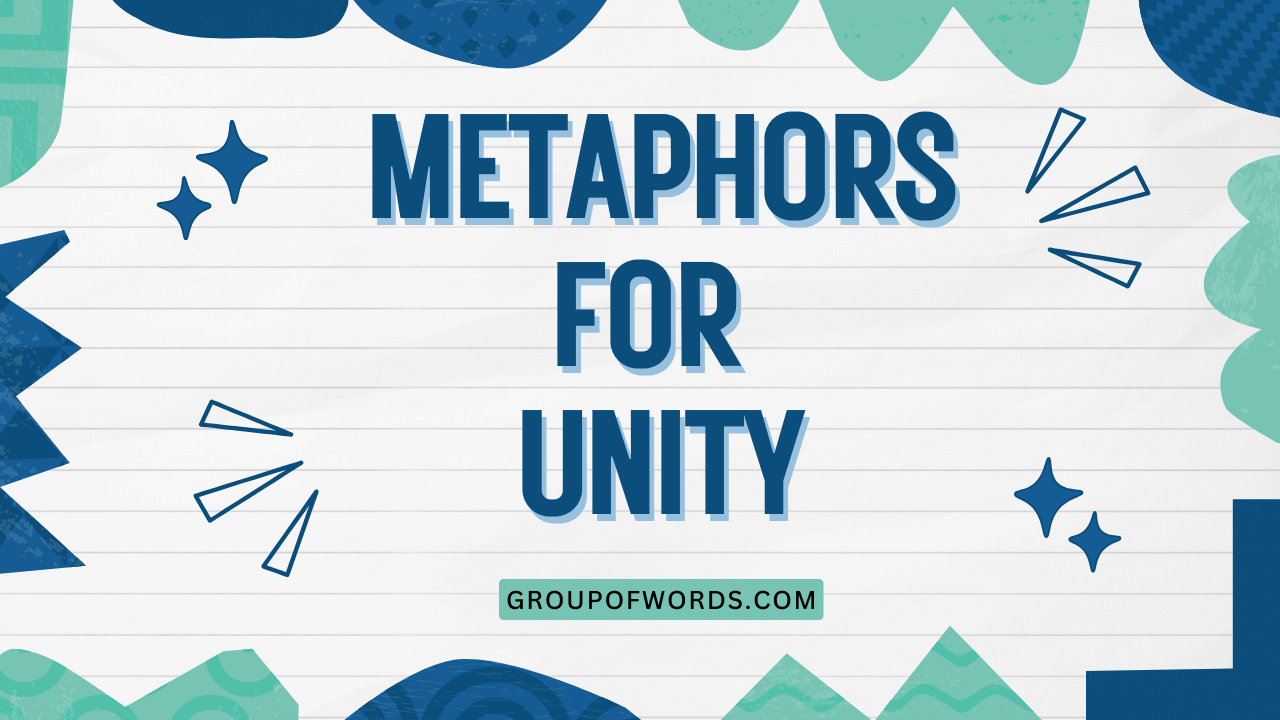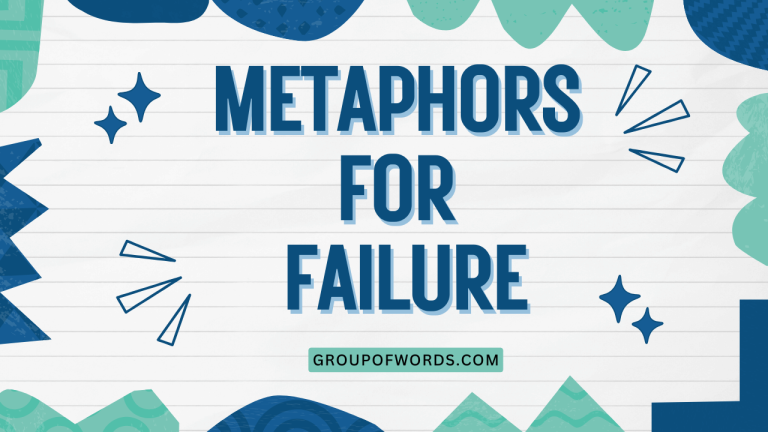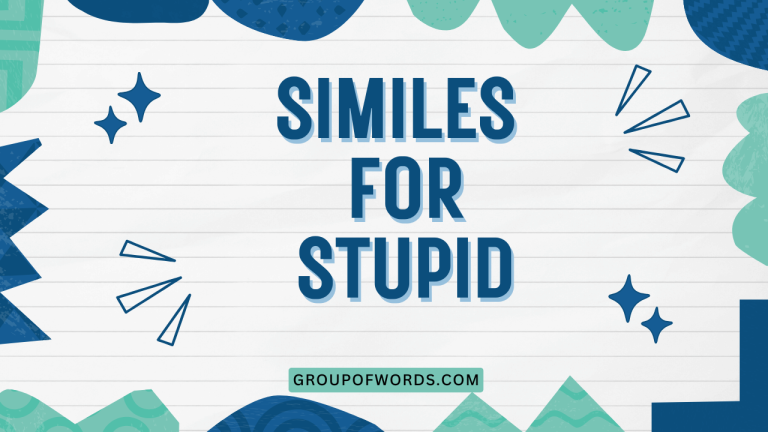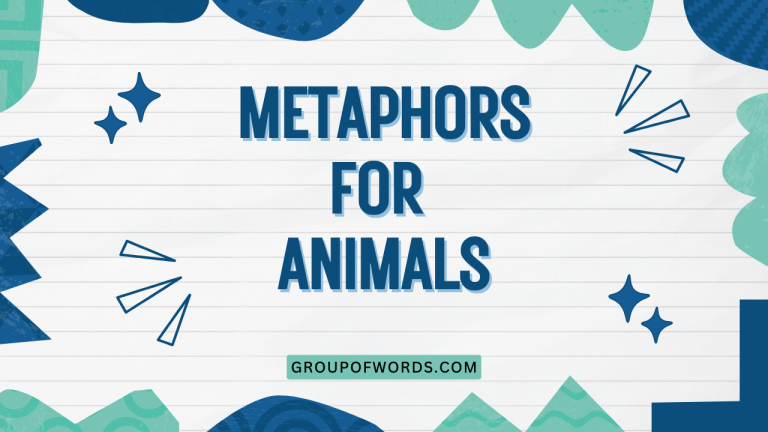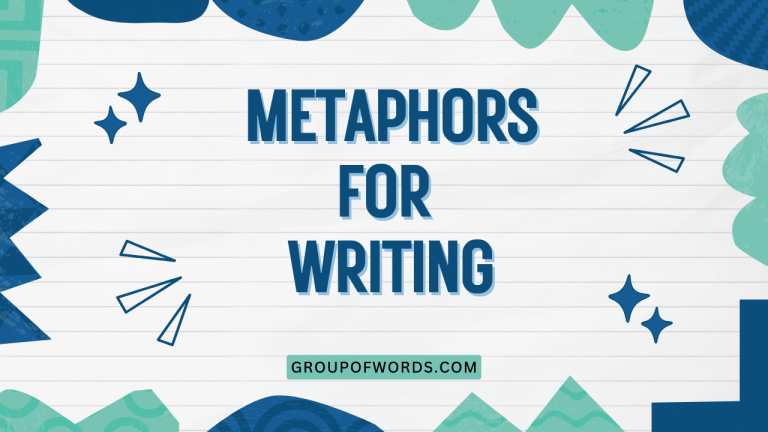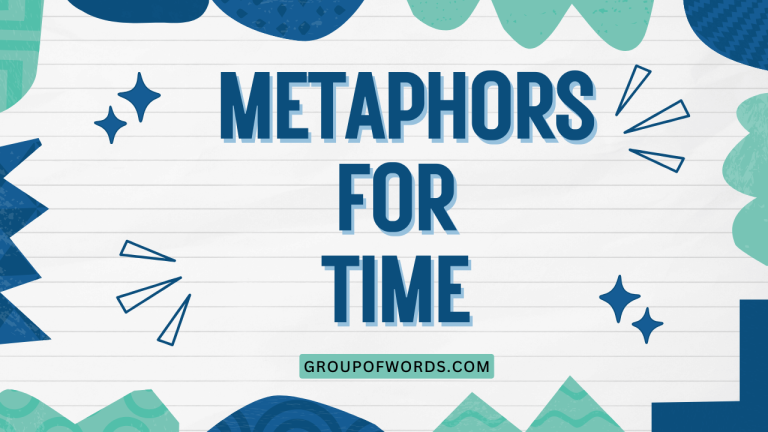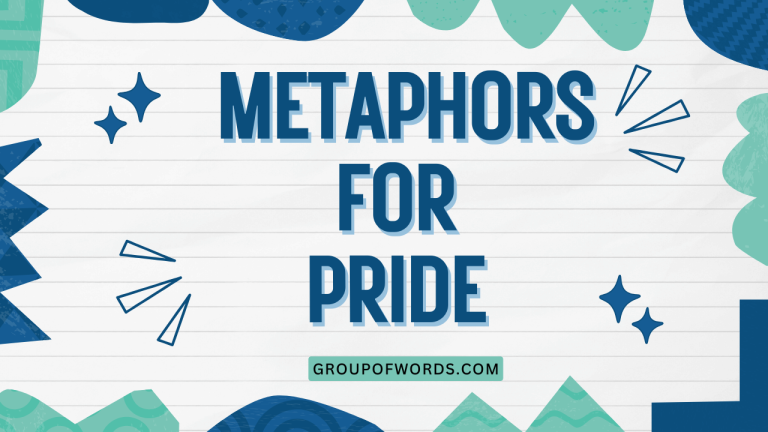Metaphors for Unity: A Grammatical Exploration
Unity is a concept deeply ingrained in human society, representing togetherness, harmony, and collective strength. To effectively communicate the nuances of unity, we often rely on metaphors, which are figures of speech that transfer meaning from one context to another.
Understanding how these metaphors function grammatically allows us to appreciate their power and use them more effectively in our own writing and speech. This article explores the various ways metaphors are used to express unity, providing examples, usage rules, and practice exercises to enhance your understanding.
This comprehensive guide is beneficial for students, writers, and anyone looking to deepen their understanding of English grammar and figurative language.
Table of Contents
- Introduction
- Definition of Metaphors for Unity
- Structural Breakdown of Unity Metaphors
- Types and Categories of Unity Metaphors
- Examples of Metaphors for Unity
- Usage Rules for Metaphors of Unity
- Common Mistakes with Unity Metaphors
- Practice Exercises
- Advanced Topics in Unity Metaphors
- Frequently Asked Questions
- Conclusion
Definition of Metaphors for Unity
Metaphors for unity are figures of speech that describe the concept of togetherness, cohesion, and harmony by drawing parallels with other, often more tangible, concepts. These metaphors go beyond literal descriptions, using imaginative language to evoke a deeper understanding of what it means to be unified. They can be used to describe social groups, political alliances, collaborative projects, and even personal relationships. The strength of a metaphor for unity lies in its ability to create a vivid and relatable image of interconnectedness and shared purpose.
The function of these metaphors is multifaceted. They not only illustrate unity but also can inspire it, reinforce it, or even critique its absence.
By framing unity in terms of something else, such as a team, a family, or a building, metaphors can make abstract ideas more concrete and emotionally resonant. They also play a crucial role in persuasive communication, allowing speakers and writers to rally support for collective action.
Metaphors for unity can appear in various contexts, from political speeches and literature to everyday conversations and corporate communications. Their effectiveness depends on the audience, the context, and the specific metaphor chosen.
A well-chosen metaphor can powerfully convey the benefits of unity, while a poorly chosen one can fall flat or even backfire.
Structural Breakdown of Unity Metaphors
The structure of a metaphor for unity generally involves two key elements: the source domain and the target domain. The source domain is the concept or image used to represent unity, while the target domain is unity itself. The metaphor works by mapping characteristics from the source domain onto the target domain.
For example, in the metaphor “Our team is a well-oiled machine,” the source domain is a “well-oiled machine,” and the target domain is “our team.” The characteristics of a well-oiled machine – efficiency, smooth operation, and coordinated parts – are transferred to the team, suggesting that the team functions effectively and harmoniously.
The effectiveness of a metaphor also depends on the shared understanding between the speaker and the audience. If the audience is unfamiliar with the source domain, the metaphor may not be effective.
It’s also important that the characteristics being mapped from the source to the target domain are relevant and appropriate. A mismatch can lead to confusion or a weakening of the intended message.
The grammatical structure of unity metaphors is typically straightforward. They often appear as similes (using “like” or “as”), direct comparisons, or implied comparisons.
The key is the semantic relationship between the words used, rather than a complex grammatical construction.
Types and Categories of Unity Metaphors
Metaphors for unity can be categorized in several ways, depending on the underlying conceptual structure. Here, we’ll explore three common categories: structural metaphors, orientational metaphors, and ontological metaphors.
Structural Metaphors
Structural metaphors involve using one concept to structure our understanding of another. In the context of unity, this often means using a concrete, well-defined system or entity to represent a group or collective.
These metaphors emphasize the organization and interconnectedness of the unified entity.
Examples of structural metaphors for unity include: “a team,” “a family,” “a puzzle,” “a chain,” and “a network.” Each of these source domains provides a framework for understanding how the unified group operates and how its members relate to one another.
Orientational Metaphors
Orientational metaphors use spatial relationships (up-down, in-out, front-back, etc.) to describe abstract concepts. In the context of unity, these metaphors often relate to notions of strength, progress, and visibility.
They help to position unity in relation to other concepts or goals.
Examples of orientational metaphors for unity include: “standing together,” “moving forward as one,” “being on the same page,” and “rising above challenges together.” These metaphors suggest that unity is associated with positive spatial orientations, such as upward movement and shared direction.
Ontological Metaphors
Ontological metaphors treat abstract concepts as if they were concrete entities or substances. In the context of unity, this often involves personifying the group or collective, giving it human-like qualities or treating it as a single, unified being.
These metaphors emphasize the identity and agency of the unified entity.
Examples of ontological metaphors for unity include: “the community has spoken,” “the company is united in its vision,” “the movement is gaining momentum,” and “the nation is healing.” These metaphors treat the group as a single entity capable of speaking, acting, and experiencing change.
Examples of Metaphors for Unity
To further illustrate the different types of metaphors for unity, let’s examine examples of each category in detail. These examples demonstrate how metaphors can be used to express various aspects of unity in different contexts.
Structural Metaphor Examples
Structural metaphors use a concrete structure to represent unity. The following table provides a comprehensive list of examples, each illustrating how a different structural element can be used to depict togetherness.
| Metaphor | Explanation | Example Sentence |
|---|---|---|
| A team | Unity is represented as a group working towards a common goal. | Our department is a team, each member contributing unique skills. |
| A family | Unity is likened to the close-knit relationships within a family. | The employees treat each other like family, supporting each other through thick and thin. |
| A puzzle | Unity is seen as different parts fitting together to create a whole. | Each project is a puzzle, and our combined efforts ensure all the pieces fit perfectly. |
| A chain | Unity is represented as interconnected links providing strength. | We are a chain, and our strength lies in our unbreakable bond. |
| A network | Unity is depicted as a connected system of individuals or groups. | Our organization is a network, connecting people from all walks of life. |
| A symphony | Unity is the harmonious blending of different sounds to create beautiful music. | The diverse voices in the choir came together to create a symphony of unity. |
| A tapestry | Unity is seen as different threads woven together to create a beautiful image. | The community is a tapestry, woven with the unique experiences of each member. |
| A bridge | Unity connects different sides or groups. | Education is a bridge, connecting people from different backgrounds. |
| A building | Unity is the solid structure that supports a common purpose. | Our organization is a building, built on the foundation of shared values. |
| A garden | Unity is the harmonious growth of different elements in a shared space. | The school is a garden, where students from diverse backgrounds grow together. |
| A web | Unity is the interconnectedness and support within a network. | The internet is a web, connecting people globally and fostering unity. |
| A circle | Unity is the continuous and inclusive nature of a group. | The community formed a circle, symbolizing their unity and togetherness. |
| A rope | Unity is the strength derived from intertwined strands. | Our team is a rope, with each member contributing to its overall strength. |
| A mosaic | Unity is the beautiful composition of diverse pieces. | The city is a mosaic, reflecting the diverse cultures of its residents. |
| A vessel | Unity is the container that holds and protects shared values. | Our organization is a vessel, carrying forward the values of unity and cooperation. |
| A chain link | Each person is a link, and together, they create a strong chain of unity. | Every volunteer is a chain link in our organization, contributing to our cohesive unit. |
| A gear | Each member is a gear, and together, they make the machine work. | Our team is a set of gears, with each member interlocked and driving success. |
| A symphony orchestra | Everyone plays a different instrument, but together, they create a harmonious melody. | The diverse talents of our team blend together like a symphony orchestra, creating beautiful results. |
| A colony | Working to achieve a common goal, a group of people or animals. | The ants worked together as a colony to bring food back home. |
| A flock | Moving together in the same direction as a group. | The birds flew as a flock in the sky, creating a beautiful sight. |
| A school | Learning and growing together in a group. | The students acted as a school to teach each other about the project. |
| A swarm | Working together to protect each other as a group. | The bees formed a swarm to protect their queen. |
| A class | Together, the students work to understand the material. | The students worked together like a class to pass the exam. |
| A club | The members of the club work together to achieve a common goal. | The members of the club worked together to raise money for charity. |
| A corporation | The employees of the corporation work together to achieve a common goal. | The employees of the corporation worked together to increase sales. |
| A business | Working together to make a profit. | The partners of the business worked together to make the business successful. |
| A partnership | Working together to achieve a common goal. | The members of the partnership worked together to make the project successful. |
| A band | Working together to make music. | The members of the band worked together to make beautiful music. |
| A choir | Working together to sing. | The member of the choir worked together to fill the room with song. |
Orientational Metaphor Examples
Orientational metaphors use spatial relationships to represent unity. The table below illustrates how directional and positional terms can enhance the understanding of togetherness and common purpose.
| Metaphor | Explanation | Example Sentence |
|---|---|---|
| Standing together | Unity is represented as a group maintaining a united front. | We are standing together against injustice, unwavering in our resolve. |
| Moving forward as one | Unity is seen as collective progress towards a shared goal. | The community is moving forward as one, building a brighter future for all. |
| Being on the same page | Unity is depicted as shared understanding and agreement. | It’s crucial that we are all on the same page to ensure the project’s success. |
| Rising above challenges together | Unity is represented as overcoming obstacles through collective effort. | By rising above challenges together, we can achieve anything we set our minds to. |
| Pulling in the same direction | Unity is the coordinated effort towards a common goal. | If we all pull in the same direction, we can achieve our objectives faster. |
| Heads together | Working closely and collaboratively to solve problems. | They put their heads together to solve a complex equation. |
| Side by side | Standing in support of each other. | We stand side by side with our allies in the fight for freedom. |
| Shoulder to shoulder | Close cooperation and support in difficult times. | The soldiers fought shoulder to shoulder, protecting their comrades. |
| Marching in step | Acting in unison and harmony. | The team marched in step, showing their cohesiveness and discipline. |
| On the same wavelength | Having a similar understanding or perspective. | The two leaders were on the same wavelength, making negotiations smooth and swift. |
| Climbing to the top together | Achieving success through unified efforts. | The team was climbing to the top together, celebrating each milestone as a group. |
| Swimming in the same direction | Pursuing a common goal with synchronized effort. | The entrepreneurs were swimming in the same direction, creating a powerful business venture. |
| Rowing in the same boat | Facing challenges together with shared resources and teamwork. | The employees were rowing in the same boat, weathering the economic storm as one. |
| Headed in the same direction | Working towards a common goal. | The students were headed in the same direction, all determined to succeed in their studies. |
| Sailing in the same ship | Having a shared destiny and working together for survival. | The team members were sailing in the same ship, committed to helping each other navigate the challenges. |
| Pushing forward together | Working together to move towards the same ultimate goal. | The volunteers were pushing forward together, striving to achieve their collective aspirations. |
| Surfing the same wave | Working together to take advantage of the same opportunity. | The investors were surfing the same wave, capitalizing on the market for mutual success. |
| Walking in the same path | Moving together to achieve the same goal. | The activists were walking in the same path, demonstrating a shared commitment to social justice. |
| Dancing to the same tune | Working together to achieve a common goal. | The politicians were dancing to the same tune, seeking compromise to resolve the conflict. |
| Singing from the same hymn sheet | Sharing the same beliefs. | The members were singing from the same hymn sheet, demonstrating their shared values and principles. |
| Flying in formation | Working together to achieve a common goal. | The birds were flying in formation, showcasing the unity of nature. |
| Marching to the beat of the same drum | Working together to achieve a common goal. | The protestors were marching to the beat of the same drum, displaying their collective determination. |
| Riding the same train | Working together to achieve a common goal. | The passengers were riding the same train, sharing a journey towards their destination. |
| Sailing the same boat | Experiencing the same challenges and working together to overcome them. | The team members were sailing the same boat, weathering the economic storm together. |
| Working in the same direction | Working towards the same goal. | The employees were working in the same direction, striving for excellence in their respective roles. |
| Driving on the same road | Moving towards the same destination. | The travelers were driving on the same road, sharing a path towards their common destination. |
| Living under the same roof | Sharing a common space and resources. | The family members were living under the same roof, sharing their lives and experiences. |
| Walking on the same ground | Sharing the same experiences and challenges. | The soldiers were walking on the same ground, enduring the hardships of war together. |
Ontological Metaphor Examples
Ontological metaphors treat unity as a concrete entity, often personifying it. The following table presents examples that illustrate how unity can be described with human-like qualities or as a tangible substance.
| Metaphor | Explanation | Example Sentence |
|---|---|---|
| The community has spoken | Unity is represented as a collective voice. | The community has spoken, demanding change and accountability. |
| The company is united in its vision | Unity is seen as a shared purpose or goal. | The company is united in its vision, striving to innovate and excel. |
| The movement is gaining momentum | Unity is depicted as a force that is growing stronger. | The movement is gaining momentum, attracting more supporters every day. |
| The nation is healing | Unity is represented as a recovery from division or conflict. | The nation is healing, slowly but surely overcoming its past wounds. |
| The group is a force to be reckoned with | Unity is seen as a powerful and influential entity. | The group is a force to be reckoned with, capable of achieving significant change. |
| The team breathed a collective sigh of relief | Unity is represented as a shared emotion or experience. | The team breathed a collective sigh of relief after successfully completing the project. |
| The union is strong | Unity is represented as a robust and resilient entity. | The union is strong, standing firm in its commitment to its members. |
| The organization is a single entity | Unity is portrayed as a unified and indivisible being. | The organization is a single entity, working together seamlessly to achieve its goals. |
| The city is coming together | Unity is depicted as a process of convergence and cooperation. | The city is coming together to support the victims of the natural disaster. |
| The family stands as one | Unity is seen as an unbreakable bond and shared identity. | The family stands as one, supporting each other through thick and thin. |
| The school is a collective of innovators | Unity is the combined creative spirit of a group. | The school is a collective of innovators, constantly pushing the boundaries of knowledge. |
| The community is a wellspring of support | Unity is a source of strength and encouragement. | The community is a wellspring of support, offering help and understanding to those in need. |
| The coalition is a juggernaut of change | Unity is a powerful and unstoppable force. | The coalition is a juggernaut of change, transforming society for the better. |
| The movement is a symphony of voices | Unity is a harmonious blend of diverse perspectives. | The movement is a symphony of voices, each contributing to a richer and more nuanced understanding. |
| The nation is a tapestry of cultures | Unity is the beautiful integration of different traditions. | The nation is a tapestry of cultures, woven together to create a vibrant and diverse society. |
| The team embodies spirit | Unity is represented as a shared enthusiasm and determination. | The team embodies spirit, inspiring others with its unwavering commitment. |
| The society is a beacon of hope | Unity is a symbol of optimism and progress. | The society is a beacon of hope, guiding humanity towards a brighter future. |
| The group represents strength | Unity is portrayed as a source of power and resilience. | The group represents strength, standing tall against adversity. |
| The choir creates harmony | Unity is represented as a melodious blending of voices. | The choir creates harmony, filling the hall with the sounds of unity and peace. |
| The army protects its people like a shield | Unity is represented as a protector. | The army protects its people like a shield, sacrificing their lives for the good of the people. |
| The family protects its children like a mother | Unity is represented as a caretaker. | The family protects its children like a mother, making sure that they have everything that they need. |
| The team worked like a well-oiled machine | Unity is represented as a machine. | The team worked like a well-oiled machine, completing every task to perfection. |
| The band played like a symphony | Unity is represented as a symphony. | The band played like a symphony, creating a beautiful song that everyone would enjoy. |
| The group moved like a unit | Unity is represented as a unit. | The group moved like a unit, working together to complete their mission. |
| The organization worked like a team | Unity is represented as a team. | The organization worked like a team, supporting each other to the finish line. |
| The club came together like a family | Unity is represented as a family. | The club came together like a family, supporting each other through thick and thin. |
| The business was like a partnership | Unity is represented as a partnership. | The business was like a partnership, with each member contributing their expertise. |
| The group worked together like a choir | Unity is represented as a choir. | The group worked together like a choir, harmonizing to create a beautiful song. |
Usage Rules for Metaphors of Unity
Using metaphors for unity effectively requires careful consideration of several factors. Here are some key usage rules to keep in mind:
- Relevance: Ensure that the source domain of the metaphor is relevant to the target domain (unity). The characteristics being mapped should make sense in the context of unity.
- Clarity: Choose metaphors that are easy to understand. Avoid obscure or overly complex metaphors that may confuse your audience.
- Appropriateness: Consider the context and audience. A metaphor that is effective in one situation may not be appropriate in another.
- Consistency: Avoid mixing metaphors within the same sentence or paragraph. This can create a confusing and disjointed effect.
- Originality: While common metaphors can be effective, consider using more original metaphors to make your writing or speech more engaging and memorable.
- Avoid clichés: Steer clear of overused metaphors that have lost their impact. These can make your writing sound uninspired.
Adhering to these rules will help you use metaphors for unity in a way that enhances your communication and strengthens your message.
Common Mistakes with Unity Metaphors
Several common mistakes can undermine the effectiveness of metaphors for unity. Being aware of these pitfalls can help you avoid them in your own writing and speech.
| Mistake | Incorrect Example | Correct Example | Explanation |
|---|---|---|---|
| Mixed Metaphors | “Our team is a well-oiled machine that’s also sailing in the same boat.” | “Our team is a well-oiled machine.” | Mixing metaphors creates a confusing and contradictory image. |
| Inappropriate Metaphors | “Our organization is a battlefield of unity.” | “Our organization is a garden of unity.” | An inappropriate metaphor can convey the wrong message or be offensive. |
| Overused Clichés | “We are all in the same boat.” | “We are all navigating these challenges together.” | Clichés lack originality and can make your writing sound uninspired. |
| Unclear Metaphors | “Our unity is a quantum entanglement.” | “Our unity is a tightly woven fabric.” | Unclear metaphors can confuse your audience and weaken your message. |
| Irrelevant Metaphors | “Our unity is like a delicious pizza.” | “Our unity is like a strong foundation.” | Irrelevant metaphors fail to connect with the concept of unity. |
By avoiding these common mistakes, you can ensure that your metaphors for unity are clear, relevant, and effective.
Practice Exercises
Test your understanding of metaphors for unity with these practice exercises. Identify the type of metaphor used in each sentence and explain its effectiveness.
| Question | Answer |
|---|---|
| 1. The community is a beacon of hope for the future. | Ontological metaphor. The community is personified as a source of hope. |
| 2. We are standing together against all odds. | Orientational metaphor. Unity is represented as a united front. |
| 3. The team is a well-oiled machine, working in perfect harmony. | Structural metaphor. The team is likened to an efficient machine. |
| 4. The nation is healing after a period of division. | Ontological metaphor. The nation is personified as recovering from an illness. |
| 5. We are all rowing in the same boat, facing the storm together. | Orientational metaphor. Unity is depicted as shared effort in a common struggle. |
| 6. The organization is a network of dedicated volunteers. | Structural metaphor. The organization is represented as an interconnected system. |
| 7. The movement is gaining momentum, attracting supporters from all walks of life. | Ontological metaphor. The movement is personified as growing stronger. |
| 8. We are climbing to the top together, celebrating each milestone as a team. | Orientational metaphor. Unity is represented as shared progress towards a goal. |
| 9. The school is a garden where students grow and flourish. | Structural metaphor. The school is likened to a nurturing environment. |
| 10. The society is a tapestry of diverse cultures and traditions. | Ontological metaphor. The society is depicted as a rich and varied entity. |
| 11. To pass the exam, the students worked like a team. | Structural metaphor. The students are likened to a team. |
| 12. The family worked together like a well-oiled machine | Structural metaphor. The family is likened to a machine. |
| 13. To make sure the company reaches its goals, the CEO wanted everyone to be on the same page. | Orientational metaphor. Unity is depicted as shared effort in a common struggle. |
| 14. Our unit is marching in step, and is close to reaching our goals! | Orientational metaphor. Unity is depicted as shared effort in a common struggle. |
Exercise 2: Rewrite the following sentences using a different type of metaphor for unity.
- Original: The community is a beacon of hope for the future.
- Rewritten: The community is standing together to build a brighter future.
- Original: We are standing together against all odds.
- Rewritten: We are a strong team, overcoming challenges together.
- Original: The team is a well-oiled machine, working in perfect harmony.
- Rewritten: The team is united in its pursuit of excellence.
- Original: The nation is healing after a period of division.
- Rewritten: The nation is moving forward as one, leaving the past behind.
- Original: We are all rowing in the same boat, facing the storm together.
- Rewritten: We are a family, supporting each other through the storm.
Advanced Topics in Unity Metaphors
For advanced learners, exploring the nuances of unity metaphors can involve delving into the cultural and historical contexts in which they are used. Different cultures may have different metaphors for unity, reflecting their unique values and experiences.
For instance, some cultures may emphasize the importance of harmony and cooperation, while others may prioritize individual contributions to the collective good.
Another advanced topic is the use of metaphors for unity in political discourse. Politicians often use metaphors to rally support for their policies or to criticize their opponents.
Analyzing these metaphors can provide insights into the underlying ideologies and power dynamics at play.
Finally, exploring the ethical implications of using metaphors for unity is crucial. While metaphors can be powerful tools for persuasion, they can also be used to manipulate or deceive.
It’s important to be aware of the potential for misuse and to use metaphors responsibly.
Frequently Asked Questions
- What is the difference between a metaphor and a simile?
A metaphor is a direct comparison between two unlike things, while a simile uses “like” or “as” to make the comparison. For example, “Our team is a family” is a metaphor, while “Our team is like a family” is a simile. Both can be used to express unity, but metaphors are generally considered more forceful and direct.
- How can I come up with original metaphors for unity?
To create original metaphors, start by thinking about the characteristics of unity that you want to emphasize. Then, brainstorm different concepts or images that share those characteristics. Don’t be afraid to think outside the box and experiment with unconventional comparisons. Consider the specific context and audience to ensure the metaphor resonates effectively.
- Are some metaphors for unity more effective than others?
Yes, the effectiveness of a metaphor depends on several factors, including its relevance, clarity, appropriateness, and originality. A well-chosen metaphor can powerfully convey the benefits of unity, while a poorly chosen one can fall flat or even backfire. Always consider your audience and context when selecting a metaphor.
- Can metaphors for unity be used in a negative way?
Yes, metaphors can be used to critique the absence of unity or to highlight the negative consequences of division. For example, you could say, “The community is fractured and broken,” using the metaphor of a broken object to represent disunity.
